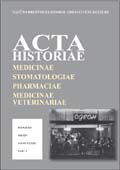Urbana bezbednost i prevencija uličnog kriminala kao preduslovi za razvoj zdrave zajednice
Urban safety and prevention of street crime as a prerequisite for the development of healthy communities
Author(s): Nataša Danilović HristićSubject(s): Criminology, Health and medicine and law, Rural and urban sociology
Published by: Naučno društvo za istoriju zdravstvene kulture
Keywords: criminal; health; community; prevention; urban public space; urban safety
Summary/Abstract: Th e World Health Organization (WHO) classifies community safety of crime in the category of natural disasters, fires, traffic and other accidents, in which the major role is played by the ability of the community to react, prevent, help or reduce negative effects. Also,The International Centre for the Prevention of Crime gives even wider focus on community safety, considering it as a public good. One of the generally accepted definitions that „the safety it the basis is the freedom of the threats“, which gives interpretation on higher level of overall safety (state, national), but it could be adapted on the level of urban space and feelings of its users. Th e basis for violent (criminal, sexist or racist) behavior toward some distinct categories of the population lays in general social and economic situation of the society,which is transferred to city streets. Th e reality and seriousness of the street violence leads to general feeling of the insecurity in communities and insecurity of urban spaces, which leads to its reduced use. Th ere is an increase of clinic cases of the contemporary urban disease of agoraphobia, that originally signified fear of open space, but nowadays the implications of this term are the assemblage of fears in connection with the open spaces and great amount of people and the fear of suddenly incapacity to run away or seek for help. It is necessary to define and establish the conditions for the community safety in order to receive the positive result of the crime prevention; in order to be treated as the aspect of the quality of life, in which the people, individually or collectively, are in best possible way protected of potential dangers or threats that are consequences of the criminal or antisocial behavior of other parts of society.Th e sense of insecurity in the public urban spaces has two dimensions, the objective and subjective. Th e objective is supported by realistic events in space and subjective is topic of the personal feelings of the citizens, based equally on objective dimension as on single rating of the acceptance and tolerance of reality, weakness or courage, readiness to resist and to oppose to the violence in surrounding. How one person will react depends of the development of his/her senses, which are partially destined by the social status.
Journal: Acta historiae medicinae, stomatologiae, pharmaciae, medicinae veterinariae
- Issue Year: 2014
- Issue No: 33
- Page Range: 16-30
- Page Count: 15
- Language: Serbian

